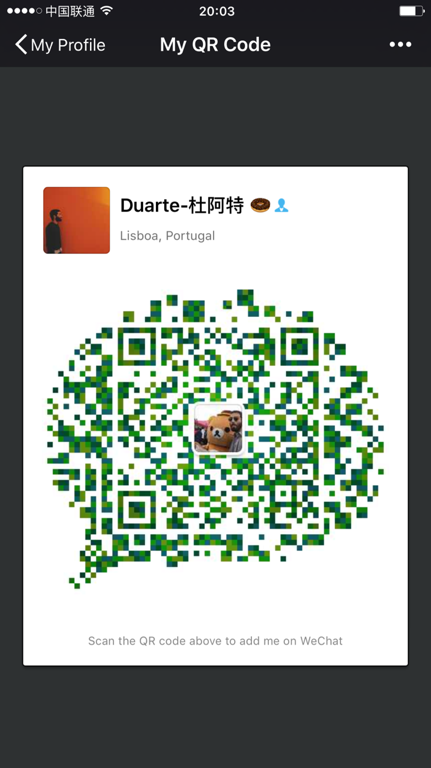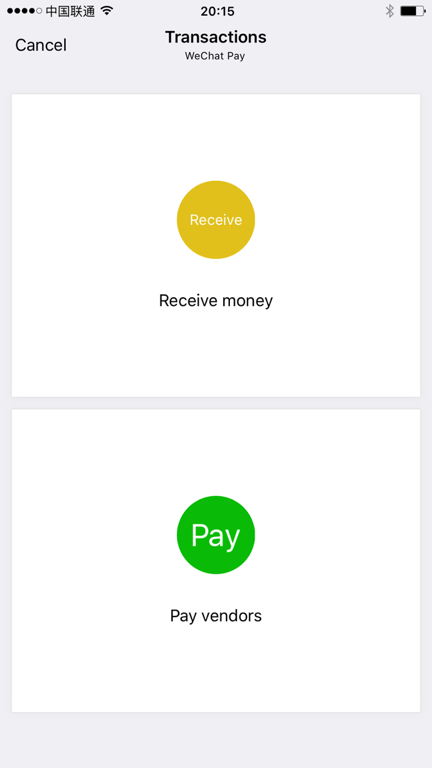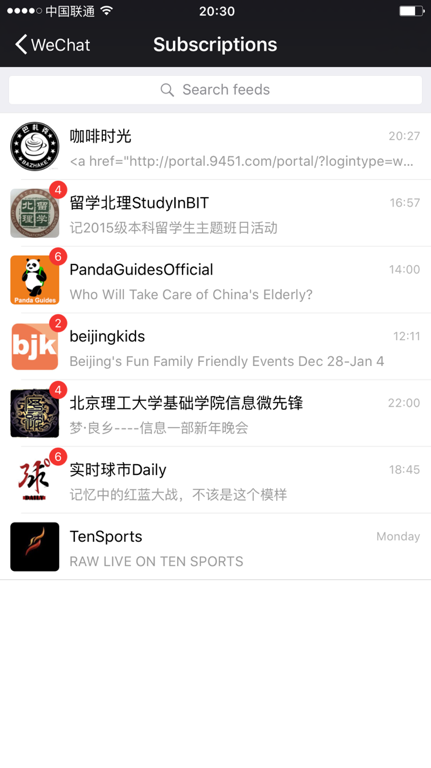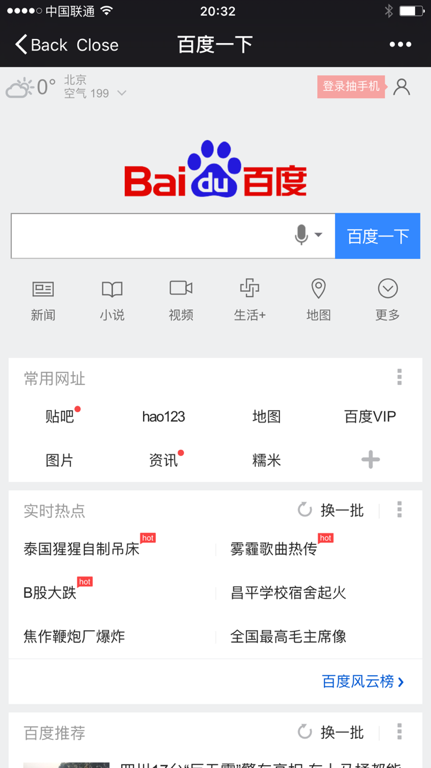A QR (Quick Response) code is a tool by which we can transfer data from a place to another. They were first developed in Japanese factories in order to quickly identify pieces or machines. Particularly useful in the confusing data driven world of Japanese car manufacturers.
Basically, a QR code stores information, such as an URL, and can be decoded by a device (usually, a smartphone!). It’s actually pretty easy to generate a QR code for what ever you like! Just visit this web page, insert a URL and get a scannable code!
THE POWER OF QR CODES
While living in China, as soon as I landed and took my first metro I couldn’t help to notice the absolute explosion of QR codes all around me!
Let’s take a look at some of the most impressive uses of QR’s in the other side of the world:
Of course any of this actions are carried in the same application: The almighty WeChat.
Making friends
Nobody uses phone numbers in Asia anymore. When you meet someone, and want to keep their contact; you take your phone out, open WeChat and scan your new friend’s QR code. No need to spell out your phone number.
On the other side, all you friend does is click his profile picture and display the code in his screen. Of course any of this actions are carried in the same application: The almighty WeChat.
This feature finally arrived to Facebook Messenger a few weeks ago.
Payments
That’s it, no Apple Pay, no NFC bullshit
Let’s say you are in a queue in a Chinese 7Eleven (pretty specific), and the person right in front of you is paying for their coffee. Instead of reaching for their wallet, they reach for their smartphone, and with two clicks, they pay for their cup of coffee. That’s it, no Apple Pay, no NFC bullshit. Paying with QR codes is a fully developed technology in China. Anyone can pay and receive money at anytime, just with WeChat and an internet connection.



Of course this can raise some security-related doubts, but from the tech point of view: its pure awesomeness. Think of the possibilities: maybe your friend owes you money, maybe you want to pay some street food you just bought, a taxi driver, a meal. Pay for everything!
Wi-Fi
QR code based logins are definitely a reality in China. I have been confronted with mostly two ways of using QR codes to login in a Wi-Fi network.
The first one is the simplest one. You scan a code, and the WeChat browser opens a window where you read the password and you just copy/paste it onto the settings app.
The second one is definitely a quicker one. Let’s say you enter a coffee-shop; you scan their QR code. That QR code adds the coffee shop to your WeChat subscriptions. You click in the subscription and send them a message with the text “Wi-Fi”. The page/chat sends you back a link to a page where you can directly log in. Click that blue link and you’re surfing! Its easier to show than to explain:
These three examples of QR code uses are just the tip of the iceberg



These three examples of QR code uses are just the tip of the iceberg. While on our side of the world QR codes are not a part of our technology day-to-day. In places like China, scanning is something they do on a regular basis. Adding someone, paying, joining a page/community, subscribing to news, downloading documents, reading regulations, standing in line of a restaurant, seeing in what station you are, listening to a new advertised singer, scanning your movie ticket or watching a movie trailer. QR codes are everywhere.
OUR (DULL) SIDE OF THINGS
On our side of the tech-world, QR codes are something we know exists, but most of times is just a thing that sits in the bottom corner of an advertisement. In Europe, QR codes are a neglected technology. Think about it, how many times have you used a QR code this week?
Of course, most of the success of QR codes in China is due to a big technology company like WeChat having the courage (or should I say: not having the fear) of implementing this technology. But not only WeChat uses QR’s. Big Chinese tech players like Taobao, QQ, Youku and JD are using QR’s as well.
On another hand, it seems like some big tech players on our side of things are starting to implement the technology as well. What I have learned is that, for the technology to thrive, the big companies have to start using it. And “educate” the user so that he can use it.
Snapchat: Every Snapchat user has a QR code, and by swiping down on the Snapchat camera you can easily see yours. Adding someone in Snapchat is as simple as pointing the Snapchat camera at a QR code of a friend, and then taping and holding that code.

WhatsApp: Although I think WhatsApp could have a major role in this field, like copying some of WeChat’s features, they seem, for some reason to be much more concerned about privacy. If launching WhatsApp calling took them 4–5 years, I have really lost hope for them in terms of investing in other things. Their use of QR code has been restricted to their Web based login that you use when you want to use WhatsApp Web.
Facebook: Facebook briefly launched a QR code system to add new friends but, 2 updates later, that system looks like it has been abandoned. This system was just like WeChat’s “scan and add” system.
QR codes in the western world are also used in the manufacturing industry to identify products nowadays. The technology is also very used in advertisement. But somehow it always seems to be used in a “oh and here is a QR code for the 0.5% of you that are going to scan it” way.
A pretty hot topic nowadays when we look to countries is the use of QR codes for payments. The thing is, European/American users and Asian users are very different. Their concerns about security, or user experience are very different.
While a user just like you and me (probably) values design and sometimes even minimalism in websites, the Asian user tends to like clutter and the mentality of “does it do everything?”. Web-security and data privacy follows the same guidelines.
If we think about it, services like Apple Pay are systems that a western user has no problem using because it is developed on the hardware side of things, so security is guaranteed by Apple engineers. And of course, fingerprints Vs QR, we all know which seems more secure. But if we think of payments using a QR code and 6-digit pin code, they are not so different from the bank system which uses a card and a 4-digit pin code. Of course companies like WhatsApp and WeChat storing your bank card information can raise some preoccupation but at the end of the day, it also simplifies things, a lot.
BOTTOM LINE
QR codes have potential. That potential is undeniable. The problem is, it actually has to be faster than typing. If we have an iPhone, just to scan a simple QR code in an advertisement can be a pain. We have to download an app that scans QRs, and then scan it, but of course this app will open the URL in a dedicated browser that most of times is not good. And then the user has to open the webpage in Safari. This is too much trouble.
My thoughts on the topic are that, in order for the west to experience the true potential of QR codes, one of the big Western-Tech companies will have to make a bald bet on QR codes. WhatsApp (a Facebook product) is the first that comes to mind, the Facebook app as well. What this companies seem to ignore is that this software upgrade to their apps is minimal but can go a very long way.
It would be very sad to lose the wave of QR code use, because it is a system that can make use both save time and “clicks” but that can also simplify things like payments. Payments could stop being something only available on a smartphone with fingerprint sensor or NFC technology and could be something at the reach of every user that has a smartphone with a camera.